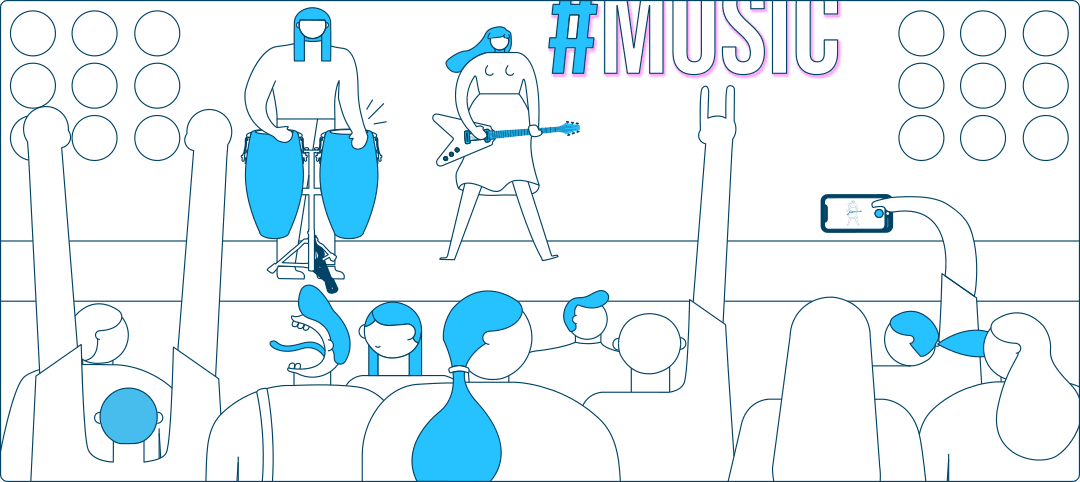Guía de marketing para grandes superficies comerciales
Todo ha cambiado desde la llegada a España de los primeros centros comerciales en la década de los 80. Después de 40 años de actividad, el sector ha crecido hasta sumar más de 500 centros y parques comerciales, y ha evolucionado desde el modelo inicial, basado en un hipermercado, a la concepción de centro comercial que se viene observando durante los últimos años, un espacio que va más allá de la pura transacción comercial.
¿Cómo afectan esa transformación y la irrupción de la compra online a las estrategias de marketing de los centros comerciales? Es lo que vamos a analizar. Empezamos.
Índice de contenidos
- Guía de marketing para grandes superficies comerciales
- Retos de marketing de centros comerciales
- La adaptación de los centros comerciales a las nuevas tendencias de marketing digital
- Conociendo al consumidor del centro comercial
- Claves para una estrategia de marketing digital de éxito
- Atraer y retener visitantes a un centro comercial con una estrategia online
- Eventos para centros comerciales
- La relación con los clientes y la consistencia en los mensajes de marketing
- ¿Necesitan los centros comerciales una estrategia de marketing?




Los centros comerciales modernos se han convertido en espacios en los que los visitantes, principalmente, buscan satisfacer sus demandas de ocio. En un mundo en el que el formato comercial está en un continuo cambio, nadie sabe cuánto tiempo se mantendrán activos este tipo de espacios, ni tampoco hacia dónde se dirige el sector en el futuro.
Los centros y parques comerciales son un negocio a nivel planetario, que suele estar en manos de fondos de inversión y grandes multinacionales con intereses cruzados. Se enmarcan tradicionalmente en el sector inmobiliario, ya que el único valor que se le podía atribuir a un espacio comercial era su localización en relación a un territorio y su superficie.
Durante años, la principal preocupación de los propietarios de los centros comerciales era la comercialización de los locales: la búsqueda de retailers y franquiciados para que instalaran sus rótulos en sus espacios.
Sin embargo, el juego se ha complicado en las últimas décadas: la proliferación de la compra/venta online ha hecho que los propietarios de los centros comerciales luchen ahora por aumentar las afluencias a sus espacios, para lo que destinan importantes partidas presupuestarias.
Y los encargados de gestionar este considerable presupuesto son los gerentes de los centros comerciales y sus responsables de marketing, que se encuentran siempre con el objetivo de conseguir resultados medibles en materia de afluencias.
Hablamos de una tarea nada fácil, ya que deben arreglárselas para que una misma acción sea efectiva a la hora de mejorar la experiencia de visita del consumidor en el centro, pero que también pueda satisfacer las exigentes métricas que hay que reportar a los propietarios y coordinadores de gerencias.
Información relacionada:
Retos de marketing de centros comerciales
El juego de compra/venta de activos, nuevas promociones y adquisición de negocio no tiene nada que ver con el día a día del personal de gerencia de un centro comercial: gerente, adjuntos y equipo de marketing. Tampoco suelen ser funciones asociadas a sus perfiles la responsabilidad en la comercialización de los espacios disponibles, la remodelación arquitectónica o los cambios profundos de concepto. Esa función tiende a recaer en la propiedad, o en su defecto, en los coordinadores de gerencias. Es otra liga.
La batalla diaria de las gerencias de los centros comerciales es con los contadores de afluencias. Cada jornada supone una hoja en blanco para enfrentarse a los retos que se encuentran en los pasillos del centro comercial. Pero a la gran responsabilidad de atraer clientes, gestionar las relaciones con los operadores y coordinar a los equipos de seguridad, mantenimiento y limpieza, se une otra más: el marketing. ¿Qué retos se afrontan en ese ámbito?
Nuevos competidores
Los centros comerciales ya no solo luchan contra otras áreas comerciales de la competencia o con el comercio a pie de calle de cada ciudad. Los grandes enemigos ahora son el comercio online, las plataformas de envío de comida a domicilio y los servicios de televisión a la carta. Y es que el aumento de las compras y transacciones por internet se ha convertido en el principal adversario de los centros comerciales y de los comercios más pequeños. No se puede luchar contra eso, pero sí adaptarse y ofrecer soluciones que minimicen sus efectos.
Diferenciación y presupuesto
Uno de los retos principales de un responsable de marketing de una superficie comercial es la diferenciación y la optimización del presupuesto que se le ha asignado ‘desde arriba’, siempre bajo el mantra de que un centro comercial ya no es un simple lugar de compras. Ahora se define como un espacio de diversión y servicios que debe proporcionar una experiencia muy distinta a la que un consumidor tiene en casa, donde puede comprar online, ver lo que quiera en la tele y pedir comida a cualquier restaurante a través de una aplicación de su móvil.
La disrupción del modelo de centro comercial hace que aún no haya un modelo claro de éxito. Como tampoco lo hay en otros sectores, como el del automóvil, la energía o la industria. Una galería comercial no es sólo un lugar de compra, debe ser un punto de encuentro para la sociedad. Ahora bien, ¿cómo conseguir eso desde los mandos de un único centro comercial?




La adaptación de los centros comerciales a las nuevas tendencias de marketing digital
Antes de nada, conviene romper el mito de que hay un marketing online y otro offline. Si solo hay un consumidor y una misma imagen que trasladarle, solo hay una manera de impactarle, y es con una estrategia multicanal. Plantear una acción promocional llamativa que atraiga clientes a la superficie comercial ya no es suficiente, ahora es necesario integrar todo tipo de herramientas digitales en la estrategia de marketing corporativa para poder conocer mejor a nuestros visitantes y poder ofrecerles una experiencia adaptada a sus gustos y hábitos de compras. La lista de posibles preguntas es infinita:
- ¿Qué edad tiene?
- ¿Con quién nos visita?
- ¿En qué momento lo hace?
- ¿Cómo se mantiene al día de nuestras novedades?
- ¿Qué servicios valora más positivamente?
- ¿Qué tipo de eventos y actividades le gustaría que se organicen?
Ya existen empresas que están implantando sistemas piloto de marketing intelligence, big data y tratamiento de datos para tratar de resolverlas. Grandes inversiones que se mueven a nivel de grupo y que implantan consultoras gigantes.
Sin embargo, la mayoría de empresas que gestionan centros comerciales en España aún están rezagadas y son los propios responsables de marketing de los centros los que tienen el reto de recoger y sacarle partido a una gran cantidad de datos de sus clientes. El día a día del marketing de un centro comercial tiene más que ver con la continua adaptación de manera individual. Con frecuencia, los responsables de marketing de cada uno de los centros comerciales tienen que ir a la batalla por su cuenta, con pocas armas.
Con ese panorama, si hablamos de estar al día de las tendencias de marketing digital, atención a estas cuatro claves:
Herramientas que no cuajan
Muchas herramientas que las centrales de gerencia han implantado, innovadoras en su día, no han acabado de calar entre sus clientes. Hablamos de las famosas apps, una moda que ya ha pasado de moda, tarjetas de fidelización que no llegan ni al 20% de sus clientes, o campañas basadas en elementos como beacons o geolocalización, que no acaban de desarrollarse del todo.
Las principales tendencias
Las tendencias actuales se centran en la implantación de sistemas CRM para una comunicación segmentada y en estrechar la relación con los clientes a través de la optimización de los perfiles de redes sociales, la integración de asistentes virtuales o el control del nivel de satisfacción de los visitantes con los servicios del centro a través de encuestas online que mandan alertas al momento si algo no funciona como debería.
Mantenerse al día
Las novedades en marketing llegan con un ritmo tan vertiginoso que a los responsables de los centros no les da tiempo a conocer de manera profunda todas las soluciones antes de que aparezcan otras nuevas. La realidad es que se encuentran solos para trazar un plan anual de marketing con ideas innovadoras y atractivas, que encajen en el presupuesto, sean viables y entrelacen el entorno online y offline.
El papel de las agencias
En esta situación, el trabajo de una agencia de comunicación y marketing es fundamental para los gerentes o el personal de gerencia del centro comercial. Contar con un equipo que te respalde es muy útil no solo para estar al día de todas las novedades de marketing y para plantear nuevas y atractivas acciones que fomenten el aumento de las afluencias y la unión de los entornos online y offline.
Información relacionada:
Conociendo al consumidor del centro comercial
El comportamiento actual del consumidor es muy diferente al que tenía hace tan solo diez años. El acceso asequible y sencillo a internet a través de un dispositivo móvil ha revolucionado la manera de comprar.
Estas son cuatro características clave de su comportamiento:
Los centros comerciales innovadores están incorporando elementos de valor que intentan convertir al centro comercial en un nuevo polo social de la ciudad. Para ello se promueven conciertos o festivales, exposiciones de arte, reuniones, ferias de artesanía, mercados de agricultores, tiendas pop-up, quioscos, zonas de juegos…
No es infrecuente que las gerencias de los centros comerciales empleen espacios sin comercializar o zonas comunes con malas cifras en los mapas de calor para emplazar alguno de estos servicios. El objetivo es claro: crear un nivel de ocio y de entretenimiento que nunca se puede satisfacer online.




Claves para una estrategia de marketing digital de éxito
Los operadores de centros comerciales buscan brindar una experiencia especial a los compradores con la introducción de nuevas e innovadoras tiendas o experiencias. En muchos casos, son las ‘locomotoras’ clásicas las que generan las afluencias (hipermercado, grandes marcas de fast fashion, cines…), pero siempre hay opciones para que una buena estrategia de marketing digital tenga un impacto en las afluencias y en el propio nivel de engagement digital del centro comercial.
Estas son algunas claves que te pueden ayudar a mejorar los resultados de las campañas de marketing digital de tu centro:
Que sea divertida
No conectar con el público es el peor fallo de una estrategia marketing. Y un centro comercial debe tocar el nivel humano del cliente, buscando emociones, experiencias y formar parte de su entretenimiento. Por ello hay que comunicar de una manera informal, con el lenguaje de la calle, pero moderando el tono de acuerdo al estilo del centro comercial.
Promociones y sorteos
Las interacciones en redes sociales se multiplican y la publicidad funciona bien cuando se comunican sorteos, regalos y promociones. Una buena agencia de marketing podrá establecer qué regalar, cuál es la dinámica a emplear y a quién dirigirse. ¿Qué está de moda? ¿Un único premio caro o muchos pequeños?
Para todo el mundo
El público que disfruta de los centros comerciales es siempre heterogéneo, por lo que no es preciso orientarse en exceso hacia un target demasiado concreto. A menos que haya una promoción o evento realmente específico para uno de los principales segmentos de interés del centro comercial, la mejor táctica es ir a por todas.
Las primicias, online
Las mejores armas para comunicar novedades, como cuando abre una tienda, cuando se inician las rebajas, cuando llegan las nuevas colecciones… son las digitales. Crear anticipación y hacer que los seguidores sientan que son los primeros en tener las noticias frescas es garantía de reacciones positivas en el ámbito online.
Atraer y retener visitantes a un centro comercial con una estrategia online
Los centros comerciales son un negocio cada vez más competitivo. La compra online cada vez es más popular, por lo que el desarrollo y modificación de ofertas es un trabajo habitual que se realiza de manera constante. Por ello, todos los centros comerciales deben garantizar que su estrategia de marketing evolucione para competir por ser la preferencia del consumidor, y el marketing de contenidos y las redes sociales pueden ser herramientas claves.
Marketing de contenidos
En el mundo de los centros comerciales, el contenido es una excelente manera de mantener la lealtad del consumidor y atraer nuevos visitantes. Pero, ¿qué contenido debe ofrecer un centro comercial? Sin duda, el relacionado con las tiendas mediante propuestas de consumo. Una buena estrategia de marketing digital debe ayudar a planificar una compra.
Mantener un blog con consejos para hacer una barbacoa en familia, para elegir un regalo a la última para el día de la madre o cómo acertar con la tendencia que llevan las ‘it-girls’ está bien. Sin embargo, dotarlo de contenido audiovisual y difundirlo en retransmisiones en directo a través de redes sociales, es de sobresaliente.
El contenido debe ser relevante, emocionante y compartible para fomentar el compromiso.
Redes sociales
Las redes sociales han despegado en los últimos años y son una plataforma excelente y gratuita para potenciar una marca. Sin embargo, tienen sus escollos. Los clientes insatisfechos pueden compartir sus experiencias, lo que puede no ser siempre positivo. A pesar de ello, si tiene una estrategia de comunicación y un equipo bien entrenado para combatir estos comentarios negativos, se le puede dar un giro positivo.
Los consumidores esperan una respuesta y una solución, y la esperan al instante. Si se puede proporcionar esto, se demuestra la lealtad del consumidor y una excelente atención al cliente. Y este nivel de respuesta es medido y mostrado al público por Facebook, por ejemplo. No cabe duda de que las expectativas de los consumidores son altas y están aumentando, por lo que cada centro comercial tiene que reaccionar rápida y eficientemente.
Información relacionada:




Eventos para centros comerciales
¿Te imaginas una actuación del Circo del Sol en tu centro comercial? ¿Y una exposición de las motos de Moto GP más famosas de la última década? Hay centros comerciales en el Golfo Pérsico, Malasia, China o Indonesia donde la instalación de pistas de Fórmula 1, pistas de esquí o las actuaciones de artistas reconocidos mundialmente, son eventos muy habituales que atraen clientes del más alto nivel a sus tiendas de lujo.
Está claro que el gran reto de los centros comerciales es ofrecer un entretenimiento de alta calidad, novedoso y distinguido, pero que tenga encaje en el presupuesto de un centro ‘normal’ de España. El desafío de tener una buena exposición, un taller o un evento en vivo requiere de una planificación, estrategia y un equipo humano capaz de hacer que las cosas sucedan.
Pero antes de arrancar, conviene conocer bien el mix comercial del centro comercial y tomarse tiempo para comprender la demografía del consumidor, sus intereses y las necesidades que busca satisfacer. Además, los eventos deben hacerse para buscar, también, la satisfacción de los comerciantes y operadores. Por ello siempre es bueno trabajar con ellos para crear campañas y eventos que les aporten notoriedad, afluencias a sus tiendas y colaboraciones que pongan en valor sus productos.
¿Por qué no hacer un taller de maquillaje para carnaval con la peluquería del centro? El operador pone el material y el personal y consigue el reconocimiento de su marca. ¿Y una clase de zumba en el centro comercial a cargo del personal del gimnasio? ¿O una feria de productos de alimentación en colaboración con el hipermercado?

Los eventos en centros comerciales tienen unos objetivos muy marcados, desde el punto de vista de las gerencias, que nunca se deben perder de vista:
Reconocimiento de marca y notoriedad
Es un objetivo tanto para entornos digitales como para los medios de comunicación y el boca a boca.
Construir relaciones y fidelizar operadores
Los eventos permiten a los operadores diferenciarse de las tiendas de otros centros comerciales de su zona.
Aumentar la afluencia de visitantes al centro
Unos pasillos más animados permitirán aumentar ventas, haciendo que los alquileres sean sostenibles.
La relación con los clientes y la consistencia en los mensajes de marketing
Por término general, los usuarios y clientes de los centros comerciales no tienen un interlocutor con el que hablar o un portavoz que les traslade información.
Más allá de alguna aparición en medios locales y alguna presentación del gerente del centro comercial, la comunicación directa con los clientes tiene dos puntos de contacto:

Es vital que el mensaje sea consistente en todas las plataformas. Dondequiera que el consumidor esté mirando, la marca debe estar enviando el mismo mensaje.
El tono de la comunicación online del centro comercial también se percibe día a día en cada post en el blog, en cada foto de Instagram y en cada texto que se escribe en Facebook. El uso de un lenguaje adecuado para cada centro comercial debe ser escrupuloso, porque no es lo mismo comunicar a clientes del alto nivel del centro de una gran ciudad que a los jóvenes del extrarradio o a públicos de entornos rurales.
Además, cada herramienta digital es preferida por un segmento de edad. El público más joven y dinámico usa Instagram en el móvil, pero el adulto prefiere emplear Facebook. Por ello, es importante no hacer un saco único con la comunicación digital y dejarla en manos de profesionales.




¿Necesitan los centros comerciales una estrategia de marketing?
Sí, y el tamaño y la flexibilidad de esta estrategia de marketing están creciendo a un ritmo impresionante. Con la cantidad de nuevas tecnologías y plataformas que se introducen constantemente, nunca ha sido tan difícil mantenerse al tanto en la estrategia de marketing. La necesidad de conocer, aprovechar oportunidades y de poder seleccionar e integrar tecnologías relevantes en la estrategia actual es vital para llegar a una audiencia cada vez más exigente.
La necesidad de personas innovadoras, que conozcan el sector y de agencias de comunicación que puedan darle forma a un plan está aumentando rápidamente. Si los gerentes de los centros comerciales desean tener éxito, es necesario que exista una estrategia sólida y en evolución, además de contar con las personas adecuadas a su alrededor para poder implementarla.
Si quieres saber si te podemos ayudar, completa este formulario y te llamamos.



